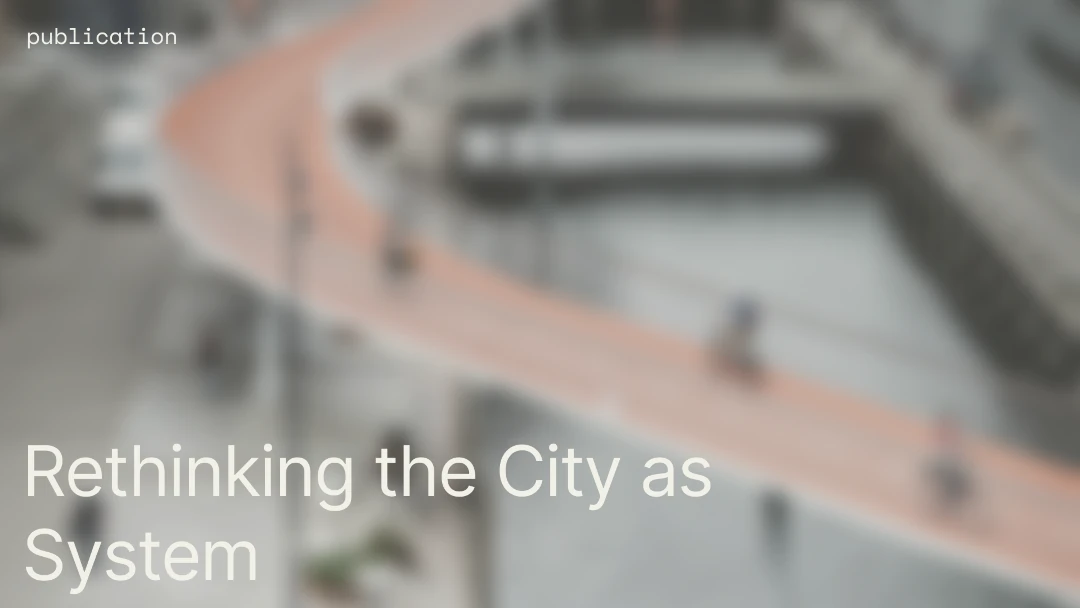
Henning Larsen Architects and Nordic developer NREP have partnered on an ambitious “earthshot” multi-storey residential project that pushes the boundaries of Denmark’s low carbon standards.
The project offers open-source solutions for best practice low-emission construction, featuring assemblies designed for optimal disassembly.

Bio
Jakob holds an MSc and a PhD in Architectural Engineering and is the Director of Innovation and Partner at Henning Larsen, his professional focus revolves around the interaction between engineering, architecture and technology.
What drives you the most?
What drives me the most are two things: the first one is that we have a huge responsibility. Everyday, there is something we can do differently and move the boundaries. Nothing is done. Nothing is finished. We're just at the beginning of this journey. And that's super inspiring, to be in a position where we have this amount of responsibility for the whole planet, so to speak.
The second thing is Architecture itself — actually building buildings. It does not just live on paper or in a spreadsheet and I love to see things getting out of our hands and becoming real.
Buildings are not like artwork, you can't just take it off the wall once you don't like it. A building will last for 100, 200 or 300+ years and it will have people living in it. So it's super important that we are designing buildings for people. All in all what drives me is the responsibility for the future, the hands on every day work — designing buildings where we construct and build something for people to live — framing the everyday life.
What does sustainability mean to you?
The most sustainable thing is not to build. Of course from a business perspective that can be tricky, since the whole industry is about creating new buildings, but this is the simple truth. Sustainability also means that we should be very focused on the square metres we build or transform.
Secondly, it's about building cleverly, meaning designing buildings that are more flexible and optimise the use of square metres. Unfortunately the square metres consideration is not part of the LCA calculations. Those are the first priorities when we go into a design project, and only as a last step we look at what the building is made of — the embodied and operational carbon.
At Henning Larsen, we initially had a sustainability team but then a few years ago we decided to “dissolve” it because sustainability doesn't belong to one corner of a studio, it belongs across all projects. Today we have experts sitting in all project teams, to influence each decision-making process.
I like this hierarchy of priorities and it makes a lot of sense. When you look at the industry as a whole, what do you think gets in the way and why is the transition so complex?
I think it's a lack of synergies, not only within the building industry, but as a whole, when we look at agriculture, mobility, waste and other infrastructures. It would be great if we could merge these systems, and create building materials from leftovers of another industry. And I guess we know the harm of the building industry and what needs to be done, but it's about the bigger picture.
When we look at Denmark, we are really not a sustainable country. If we look at our CO2 footprint per person compared to many other countries it's really bad… We have an overconsumption in terms of square metres and waste and that requires a behavioural change. This is the biggest challenge for the transition.
What is your opinion on the standardisation of LCA and Data?
I love data. I'm a big fan of data. The only way that we can push forward is by putting numbers on things. When I started here 15 years ago no one could talk numbers. Today, we almost only talk in numbers, because numbers speak and numbers move things. So I believe data is a big part of what we do and has the ability to change things for the better.
Of course we need more transparent data, we are just scratching at the top of the data pyramid. So we need to really understand the data that we're working with and that is the challenge for the future. It's all about understanding the difference, because if you are working with LCA data, of course, it can give you a direction. But if you really want to move something, you need to dive into the data and understand it.
You mentioned the synergies across industries, like agriculture and waste for example. How do we move towards more bio-based and innovative materials?
We need to challenge the building standards, not the regulation. It's the building codes, defining fire, accessibility, energy and all those parameters. They are the big barriers for scaling up on the biogenic agenda.
That does not mean we should design houses that are not safe, or accessible or use too much energy, but the bar is very high and does not allow for much room to play in.
Another obstacle is the financial model around it. The essence of our work is making money based on selling hours, which translates to “the bigger the project the bigger the revenue”. This model does not incentivise advising the client to build less or to transform an existing building. So we need to flip this around.
We need to change to a performance-based model — pushing for sustainable solutions not only by good will but ensuring there is a business around it.
And finally, risk is another big obstacle as no one wants to take the risk that comes with it. It is our job to understand the client, because — at the end of the day — they need to get the building insured, and if they cannot insure they cannot push the boundaries for more bio-based materials. It’s extremely important as designers to understand that there's a lot of value chains in this process that are interdependent.
How can AI accelerate this transition?
Again, a big fan of data then also a big fan of AI. But we need to understand it, to be able to use it and it's also important to understand the risks that come with it.
I believe it will be a game-changer, also for sustainability, because it can minimise some of the risks that we talked about just now. AI can understand data and orchestrate it in a way that will be useful for us — while we do the detailing, we can get inputs on different aspects, more data-driven as well as with a much higher precision and awareness of different impacts. I don't see it disrupting our creative processes but it will definitely affect and change our production phase, for the better.
But again, AI is super biassed as it is only using data that is out there, which isn’t innovative. It's about the value of the data.
Where should the industry stand by 2030?
It should be more unified. My hope is that we are more unified across the value chain and that we create financial models that benefit everyone in the value chain for a more sustainable future.
Do you have any advice for those who strive for making changes?
Follow your passion. I think all the successful people I know are the ones driven by passion. Be curious. And it's about being able to explain complexity to other people, and opening new doors.
When I started here, I think almost 90% of the people I worked with were trained architects. Now it's much more diverse — across the spectrum of communication, business development, social sustainability, facilitation and much more. And I think this will increase in the future, bringing different perspectives into this industry to achieve bigger changes.




























